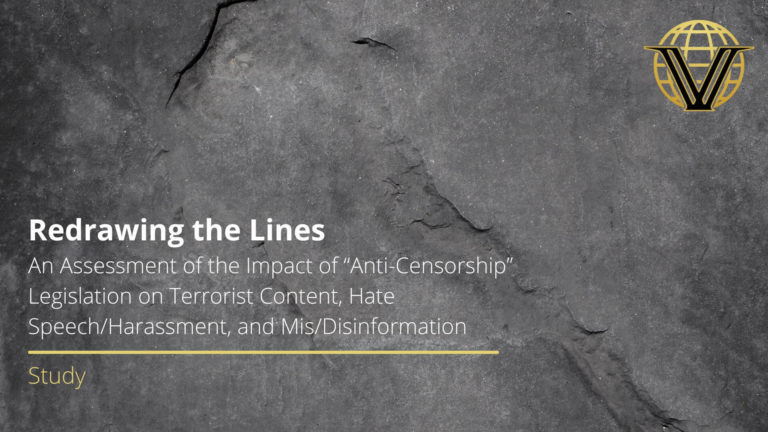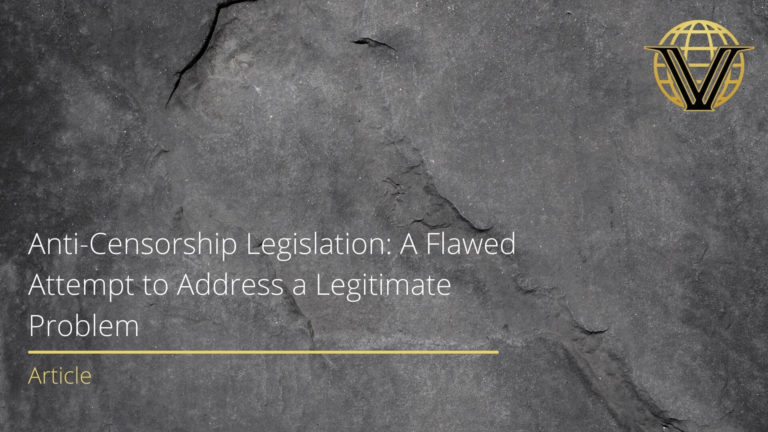Daveed Gartenstein-Ross, Colin Clarke, and Emelie Chace-Donahue
Foreign Policy Research Institute
When Islamist insurgents laid siege to the coastal town of Palma in gas-rich northeastern Mozambique on March 24, leaving dozens dead, including several foreigners, the story received international attention. The insurgency in Mozambique is being waged by a group that calls itself al-Shabaab—not to be confused with the Somali group of the same name—and is affiliated with the Islamic State’s (ISIS) Central Africa Province. Despite the recent flood of attention al-Shabaab in Mozambique has received, the insurgency is not new.
A local religious group called Ahlu Sunnah wal-Jamaa (ASWJ) turned toward militancy around 2015, eventually renaming itself (in whole or in part) al-Shabaab. The militant group has engaged in insurgent fighting against Mozambique’s government since late 2017. Al-Shabaab has not been particularly outspoken about the goals of its insurgency, but it has articulated a desire to establish rule by a hardline version of Islamic law in Cabo Delgado. The group’s aims appear to center on undermining and degrading the Mozambican government’s military and political authority, gaining local support, and combating foreign interests in Cabo Delgado.
Religious and ethnic tensions, alongside poor regional economic conditions, are also reportedly prominent factors motivating the violence. The militants are believed by local leaders and community members to be primarily “disaffected youth motivated by complex political, economic, and social factors including feelings of marginalization and disagreements with religious authorities in Cabo Delgado,” according to the most recent U.S. Department of State Report on International Religious Freedom.
Mozambique is a Christian-majority country, but around 18% of citizens are Muslim, primarily residing in the north, including in Cabo Delgado province, where most of the violence has occurred. Fundamentalist forms of Islam have spread in the country over the past several decades and have largely been at odds with local political and religious authorities. Additionally, the Mwani ethnic group—a Muslim-majority ethnic group that has a large presence in Cabo Delgado—has long viewed itself as politically and economically marginalized by the Christian-majority Makonde ethnic group in the region. These religious and ethnic tensions have converged with low levels of economic opportunity in Cabo Delgado, which is considered one of the poorest regions in Mozambique.
Origins of Militant Activity in Mozambique
Ahlu Sunnah wal-Jamaa was founded by Mozambican and Tanzanian religious leaders with links to Salafist circles in Tanzania, Kenya, and Somalia. Various local sources say the group’s early leadership included locals who studied religious doctrine and received military training in Tanzania, Sudan, and Saudi Arabia.
Early Influences and Recruitment. Accounts from locals note that one of ASWJ’s early influences was the teaching of Aboud Rogo Mohammed, an extremist cleric from Kenya designated by the United Nations for providing support to Somalia’s al-Shabaab. Rogo was killed in Kenya in 2012, but his influence lives on. ASWJ’s leaders reportedly gave lectures inspired by Rogo and distributed videos of his speeches, along with other militant propaganda. Some members of Mozambique’s al-Shabaab were followers of Rogo in Kenya who resettled in Mozambique after his death.
ASWJ’s leaders appear to have originally recruited poor or unemployed youth by offering them small loans. Recruits could invest their loans in any sector, including the illicit economy, to help them build wealth through business opportunities. ASWJ leaders were likely able to lure recruits into these business ventures by capitalizing on both “long-standing feelings of marginalization” and “issues of youth unemployment and poverty.”
Transition to Militancy. ASWJ began its transition toward militancy by mobilizing in mosques against established religious leaders, a pattern that can be discerned elsewhere in militant Salafist social mobilizations. ASWJ members reportedly began causing disruptions at mosques, criticizing local Muslims for not adequately abiding by Islamic law. Some members reportedly threatened to kill local religious leaders.
After these confrontations with local religious leaders, the group began to shift from a religious organization to a militant group. Around 2015, ASWJ leaders began setting up training camps in northern districts of Cabo Delgado and created a decision-making council that was reportedly responsible for crafting military strategy. Locals interviewed by the Mozambique-based Instituto de Estudos Sociais e Económicos say that the group began recruiting youth from Tanzania and the Great Lakes region. These foreign recruits trained locals in military techniques.
October 2017 marked ASWJ’s transition to being an overtly militant group. It launched a series of attacks against police posts, killing two officers and briefly overrunning the strategic port of Mocimboa da Praia. In the following months, the militants carried out arson attacks on villages in Cabo Delgado that killed and wounded several civilians. Locals reported that some members of the group sold off their stock and businesses around this time (much of which had been built using loans from ASWJ leaders) and left their homes to travel to Mocimboa da Praia. The group likely began referring to itself as al-Shabaab at this point. There are no indications that Mozambique’s al-Shabaab is affiliated with Somali militant group of the same name, but there have been some suggestions of a connection between militants in Mozambique and Somalia. For example, some locals reported that children who were members of the Mozambican group disappeared for several months leading up to the October 2017 attacks, traveling to Somalia during this period to “participate in jihad” and study the Islamic faith.
Escalation of the al-Shabaab Insurgency in Mozambique
Since its turn to overt militancy in 2017, al-Shabaab has grown into an established insurgency, in some places openly controlling territory.
Nascent Insurgency. The group operated as a nascent insurgency in Cabo Delgado through 2018. It carried out intermittent small-scale operations, an estimated 120 incidents that killed 38 people between January and November 2018. This initial phase of insurgency represented a building period.
The following year, al-Shabaab intensified the scale and scope of its operations, carrying out more than 150 attacks that killed over 450 people during the same reporting period. The reasons for the escalation in 2019 are not clear, but there are indications that the group began organizing with ISIS-linked militants from the Democratic Republic of the Congo (DRC) around this time.
At the beginning of 2019, news reports began to suggest that al-Shabaab was organizing training and operations with the Allied Democratic Forces (ADF), a militant group that has been waging a decades-long insurgency in eastern DRC and Uganda. Mozambican authorities arrested several Ugandan militants (likely associated with ADF) who were suspected of involvement in attacks in Cabo Delgado. A few months later, in March 2019, regional news outlets reported that an ADF offshoot, Madinat Tawhid-wa-l-Muwahidin (MTM), had opened a cell in northern Mozambique.
Affiliation with ISIS. Clear indications of al-Shabaab and ADF’s affiliation with ISIS emerged around this time, though murkier indications of a connection between the two groups and ISIS had already surfaced in 2017-18, primarily in online forums and jihadist propaganda. In April 2019, ISIS announced the formation of the Islamic State Central Africa Province (ISCAP) after claiming responsibility for an attack launched by ADF militants in the DRC. Not long after, in June 2019, ISIS claimed responsibility for an attack perpetrated by al-Shabaab in Mozambique, thus formally incorporating al-Shabaab into ISCAP.
There remains a fair amount of uncertainty about the role being played by foreign ISIS actors in Mozambique and the DRC. However, it is clear that since becoming integrated into ISCAP, al-Shabaab has significantly stepped up its operations and has begun to overtake and control territory. In August 2020, it captured Mocimboa da Praia, where it has continued to exert control. Al-Shabaab’s attacks have also become increasingly frequent and brutal, often displaying trademark ISIS tactics like beheadings. Between January and November 2020, the group was responsible for over 400 violent incidents that left more than 1,300 people dead. This is a substantial increase compared to the same reporting period in previous years. Al-Shabaab’s assault against the city of Palma in March/April 2021 shows that the militant threat is enduring, and it seems, growing more dire by the week.
Al-Shabaab also has likely grown in size since becoming affiliated with ISIS. Though many members are local Mozambicans and Tanzanians, the group also includes foreign elements, which likely include foreigners who traveled to fight with the group, as well as those who resettled in Mozambique looking for work. For the most part, the group’s foreign members come from Somalia and the Great Lakes region. Some reports have claimed that individuals from the Middle East and South Asia are present as well, but local sources have mainly reported that the fighters speak local languages.
Factors Hospitable to Insurgency
Whether al-Shabaab in Mozambique will sustain its operational tempo remains to be seen, but several factors suggest that the conditions in Mozambique are favorable to a prolonged insurgency, including geography and terrain and weak security forces.
Geography & Terrain. Mozambique is located on the southeastern coast of Africa, and Cabo Delgado is its northernmost province, bordering Tanzania. Forests and islands in Cabo Delgado offer valuable opportunities to an insurgency. The region is covered by dense forests and shrublands, which have provided the militants cover from counterterrorism operations and air raids. One media outlet reported that local residents who had been abducted by militants and later escaped described the base where they had been held as “located amid vegetation so dense that the place is always dark, necessitating the permanent use of lamps and lanterns, even during the day.” Cabo Delgado’s islands, many of which are thinly inhabited or even uninhabited, have reportedly served as training bases and points from which the militants can strategically position themselves against security forces.
Counterterrorism & Security Forces. The Mozambique Defense and Security Forces are largely incapable of countering the insurgency, lacking both adequate resources and the capabilities to contain militant activity or protect civilians. Given these deficiencies, the government of Mozambique has contracted private military companies—Wagner Group (Russia) and Dyck Advisory Group (South Africa)—to provide paramilitary assistance, including aerial support. Self-defense militias have also reportedly tried to protect civilians. After the Palma siege, the African Union called for “urgent action” to quell the fighting.
Conclusion
Though much foreign interest in Mozambique is centered around Cabo Delgado’s natural resources, outside interest also focuses on regional stability and spillover violence. The South Africa Development Community, an inter-governmental organization of countries in the Southern Africa region (including Mozambique), called for regional action on Mozambique last year since the insurgency poses “a serious threat to regional peace and stability.” In September 2020, Mozambique asked the European Union for military training and other assistance.
At various points, the insurgents have targeted contractors associated with liquefied natural gas projects, and have moved in recent months to close in on areas where these companies operate. There is the potential for foreign involvement, especially after recent attacks, and the United States has roughly a dozen Green Berets in country to train the Mozambican security forces. There is the possibility for a prolonged insurgency that could draw foreign fighters to the region, with the potential to spread into neighboring countries.
The views expressed in this article are those of the authors alone and do not necessarily reflect the position of the Foreign Policy Research Institute, a non-partisan organization that seeks to publish well-argued, policy-oriented articles on American foreign policy and national security priorities.



